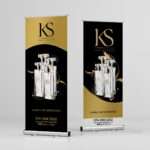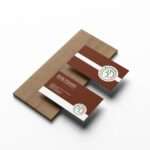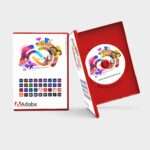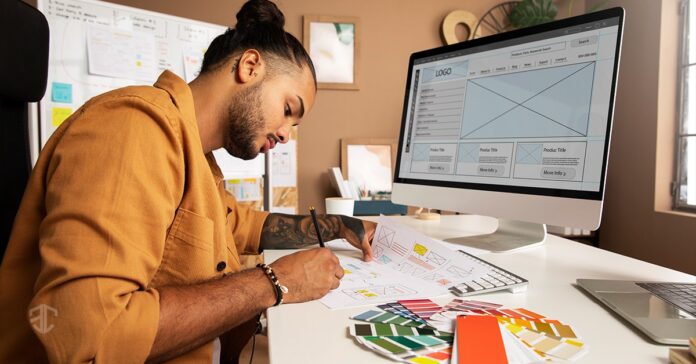Essential Tips for Effective Graphic Design
Are you ever curious about how some firms are able to simply capture attention with visually striking images? You recognise brands that leave a lasting impression in your mind, allowing you to differentiate their products even on a crowded shelf. This is the power of excellent effective graphic design, which is a powerful alchemy that combines creativity and strategy to transform businesses from being seemingly insignificant to being instantly recognisable.
Table of Contents
The purpose of this piece is to act as a guide for you as you navigate the dynamic world of graphic design. We’ll give you the tips you need to design graphics that grab your audience’s attention and convey your brand’s essence, building long-term relationships. Ensure that you are ready to unleash your brand’s true potential through effective design language!
The foundation of effective design – Effective Graphic Design
Can you imagine the chaos that would ensue if you built a home without a blueprint? If a company does not have a strong brand identity, graphic design will face the same fate. Brand identity is more than a logo; it’s the beating heart of your company, including your principles, feelings, and promises. The objective is to provide a solution to the basic question, which is, “What makes you, you?”
Defining your brand identity is a journey of self-discovery that you get to experience. Do you have a specific audience in mind? What are their requirements, desired outcomes, and areas of difficulty? In what ways does your brand stand out from those of your competitors? The process of discovering these answers will serve as the foundation of your visual identity. This will ensure that every design aspect, from your logo to your website, will connect with the appropriate individuals.

The Building Blocks of Visual Harmony
It is not a haphazard combination of colours and forms that constitutes effective graphic design; rather, it is an art form that is regulated by rules that produce visual coherence and aesthetic appeal within the design. Just as a musician can master scales, it’s crucial to understand these concepts to produce designs that are captivating and effective.
Similar to how a spotlight highlights a performer on stage, contrast highlights crucial elements within your design. Using contrasting hues, sizes, or forms can create visual interest and direct the observer’s attention.
Consider the difference between a room that is disorganised and one that is well organised; alignment gives order and clarity to your space’s design. It is possible to provide a feeling of harmony and professionalism by aligning elements such as text, photos, and other components.
In order to achieve balance, it is necessary to distribute the perceived weight in an equal manner. In certain cases, an asymmetrical design may result in compositions that are more dynamic and engaging. This does not mean that exact symmetry is always present.
Consider a song’s catchy chorus as an example of repetition; repetition helps to reinforce your brand’s message and generates a sense of familiarity or comfort. Repeating design elements like colours, typefaces, or patterns can strengthen brand identification.
A design should arrange related features in close proximity to each other, much like a grocery shop does. This enhances both comprehension and the visual hierarchy.
Essential Tools for Designers: Your Creative Arsenal
From pixel-perfect image editing to intuitive design platforms, a plethora of tools empowers both novice and experienced designers to breathe life into their visions:
Software:
- Adobe Creative Suite: The gold standard for graphic design, this comprehensive suite includes industry favourites like Photoshop, Illustrator, and InDesign, providing unmatched power and flexibility for a wide range of design needs.
- Canva: Perfect for design novices, Canva offers an intuitive drag-and-drop interface, pre-made templates, and a vast library of stock photos and illustrations.
- Sketch: A popular choice for UI/UX design, Sketch shines in creating website layouts, mobile app interfaces, and interactive prototypes.
- Figma: Known for its collaborative capabilities, Figma enables real-time design collaboration, making it ideal for teams working remotely on shared projects.
Web Resources:
- Behance and Dribbble: Fuel your inspiration by exploring the work of talented designers from around the world.
- Google Fonts and Adobe Fonts: Explore a treasure trove of free and paid fonts to find the ideal typeface that embodies your brand personality.
- Unsplash and Pexels: Access a curated library of high-quality, royalty-free stock photos for use in your designs.
Pro Tip: Don’t be afraid to experiment and find the tools that best fit your workflow and design style! The beauty of graphic design lies in its versatility and ever-changing technological landscape.
Avoiding Design Mistakes: Effective Graphic Design
Even experienced designers fall victim to these design faux pas. Avoid these blunders to ensure your designs hit the mark every time:
Overcrowding: A cluttered design suffocates your message and overwhelms the viewer. Embrace the power of white space (negative space) to create breathing room and visual clarity.
Poor Typography Choices: Unreadable fonts or a chaotic mix of too many typefaces create a jarring experience for the reader. Opt for fonts that align with your brand personality, ensure readability across different platforms, and limit the number of typefaces used in a single design.
Lack of Consistency: A consistent visual language across all your brand touchpoints is crucial for building brand recognition and trust. Define a style guide that outlines your brand colours, typography, and imagery guidelines for consistent application across your website, social media, and marketing materials.
Ignoring accessibility: Your designs should be inclusive and accessible to everyone, including those with disabilities. Consider colour contrast for visually impaired individuals and use descriptive alt text for images to ensure screen reader compatibility.
Forgetting the Target Audience: Designing without a clear understanding of your audience is like shooting arrows in the dark. Tailor your visuals, messaging, and overall aesthetic to resonate with your target demographic for maximum impact.
Learning from Success: Case Studies and Inspiration
Let’s draw inspiration from design giants who have cracked the code for impactful visual communication:
Apple: The epitome of minimalist design, Apple products and branding are known for their sleek aesthetics, clean lines, and generous use of white space. Their commitment to simplicity extends to their visual identity, creating a sense of sophistication and effortless elegance that resonates with their target audience.
Nike: With a single swoosh, Nike conveys motion, energy, and athleticism. Their logo, instantly recognisable around the world, embodies the essence of their brand promise: inspiring athletes to push their limits and achieve greatness.
Airbnb: Their playful logo, resembling a combination of a heart, a location pin, and the letter ‘A,’ brilliantly captures the brand’s essence: connection, belonging, and memorable experiences. The handwritten-style logo evokes a sense of warmth, approachability, and human connection, perfectly aligning with their brand values.
Analysing these iconic brands’ success reveals key takeaways: Effective Graphic Design
- Simplicity is key. A clear and concise message, communicated through minimalist design, cuts through the noise and makes a lasting impression.
- Storytelling through Visuals: A powerful image or logo can encapsulate the heart of your brand’s story and connect with your audience on an emotional level.
- Consistency is King: Maintaining a consistent visual language across all touchpoints builds brand recognition and fosters trust with your audience.
Conclusion: Effective Graphic Design
The ability to create successful graphic design is no longer a luxury in today’s fast-paced and competitive digital world; rather, it is an absolute must. You have the ability to build a visual identity that genuinely distinguishes you from other businesses if you equip yourself with the knowledge and skills necessary to grasp the principles of design, make use of the appropriate tools, steer clear of frequent errors, and draw inspiration from successful brands.

Frequently Asked Questions: Effective Graphic Design
If I’m not a designer, can I still create effective graphics for my brand?

Absolutely! While professional designers offer expertise, you don’t need to be a pro to create visually appealing graphics. Utilise user-friendly online tools like Canva, which provides templates and resources, making design accessible for beginners. Focus on basic principles like contrast, alignment, and clear visuals.
How important is choosing the right colours for my brand’s graphics?

Colour is crucial, as it evokes emotions and influences perception. Research colour psychology and choose a palette that aligns with your brand’s personality and resonates with your target audience. Consider industry norms and cultural interpretations. For instance, financial institutions often use blue to convey trust, while eco-friendly brands commonly use green to represent growth.
What’s the best way to make sure my brand’s visuals stay consistent across different platforms?

A brand-style guide is essential. It outlines your logo usage, colour palette, typography choices, image style preferences, and overall tone. Share this guide with everyone involved in creating content to ensure consistency across your website, social media, print materials, and other platforms.
My designs look cluttered. How can I create a cleaner, more professional look?

Embrace the power of white space (or negative space). Don’t be afraid to leave some areas empty to give your design room to breathe. It makes your content more readable, directs attention to key elements, and creates a more sophisticated aesthetic. Also, prioritise crucial information and avoid overcrowding the design.
How can I stay updated on the latest graphic design trends without feeling overwhelmed?

Follow design blogs and websites, browse platforms like Behance and Dribbble to see what other designers are creating, and pay attention to the visuals used by brands you admire. Don’t feel pressured to incorporate every trend, but pick and choose elements that align with your brand and stay true to your unique identity.
Are you ready to begin the process of transforming the look of your brand? Consider putting these suggestions into action, or seek the assistance of a skilled & effective graphic designer who can guide you through the process of developing a brand that is not only visually engaging but also really representative of who you are.
Essential Tips for Effective Graphic Design
